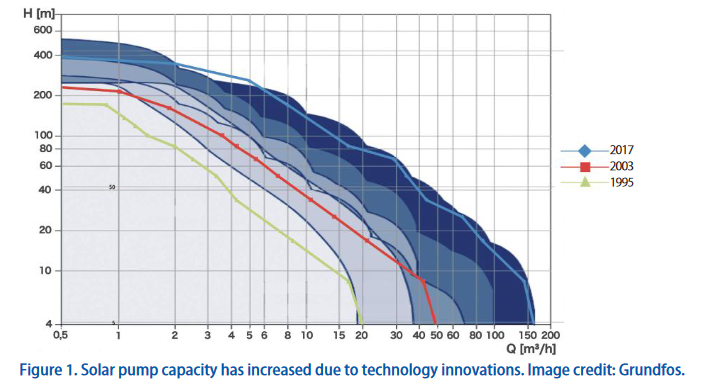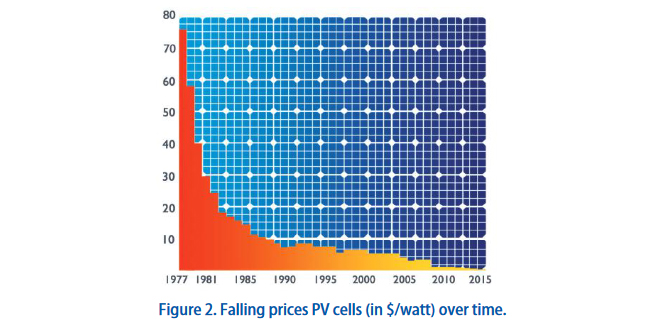Over last seven years, the technology and price of solar pumping have evolved dramatically and hence the opportunities it presents.
• (Solar Water Pump) SWP system capacity and ability have expanded. Early solar pumps had limited performance and were restricted to pumping installations with a shallow water source and a low water demand. Today, pumps can reach deeper wells (500 meters (m), compared to the previous 200 m) and push larger volumes of water (1,500 m3/day, compared to the previous 500 m3/day at low head). Efficiencies have also increased considerably. New pump and motor designs have increased water outputs over the entire pump range, as Figure 1 illustrates.

• Prices of solar PV panels have dropped exponentially. High demand for PV modules for grid-tied applications has resulted in massive economies of scale in production as well as competition among vendors. The commodity price of silicon, the key material, has also dropped substantially.
Solar modules once cost around $5/Wp (watt-peak); now, they are less than $0.75/Wp (ex-factory) as Figure 2 indicates. These reductions have made larger SWP systems possible where previously the capital cost priced them out of range.
• The number of solar water pump manufacturers and suppliers has increased. Old monopolies have been broken, and although the technology leaders continue to innovate, competition is fierce on price, performance, and quality.
• Solar water pump is cost-competitive with diesel and wind pumps in all size ranges.
• Solar water pump is being mainstreamed and awareness is growing. Good news travels fast, and markets are already demanding SWP in place of conventional pumping solutions. Further opportunities are arising as intensive awareness campaigns support and elaborate on the details of system performance and savings. Retrofits to diesel pump systems represent a market for further potential savings
